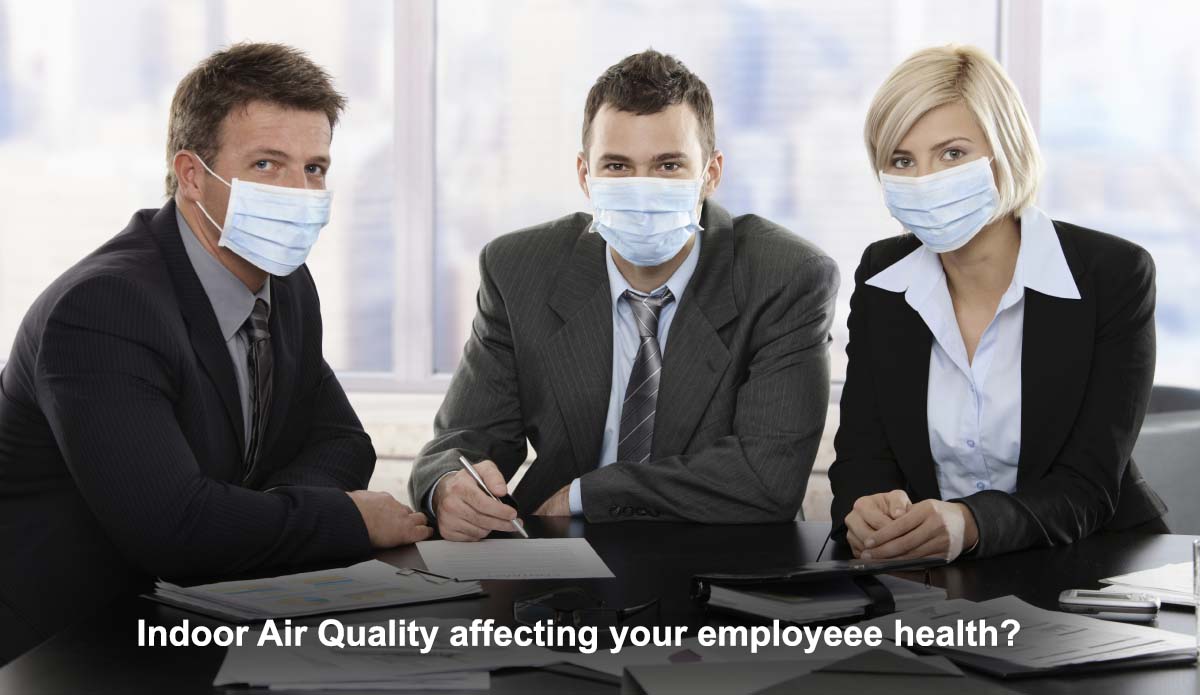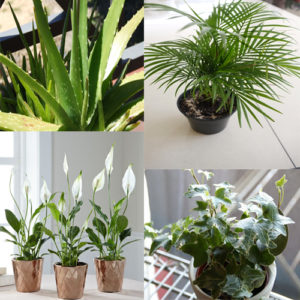Although we all are aware of the pollution in the atmosphere, and we all are doing our bit to reduce pollution; we fail to realize that we need to improve indoor air quality as well, if we want to stay healthy. We tend to think of air pollution as something outside – smog, ozone, or haze hanging in the air, especially in summer. But the truth is, the air inside commercial spaces, offices, and other buildings can be more polluted than the air outside. The air inside these areas may be polluted by lead (in house dust), formaldehyde, fire-retardants, radon, even volatile chemicals from fragrances used in conventional cleaners, in addition to dust, mites and insects that thrive on most air.

What do we mean by “good” IAQ?
Some alarming facts about Office Indoor Air Quality.
Most office occupants barely notice when indoor air quality (IAQ) is “good,” but most people will often recognize when the air is not good. IAQ is a problem when the air contains dust and objectionable odors, chemical contaminants, dampness or mold. Related to this are the physical characteristics of the air: the amount of air movement, its temperature and its humidity.
Below are some general tips to improve indoor air quality in offices and establishments. The most effective strategy for reducing indoor air pollution is to eliminate or reduce the sources of contaminants. Effective ventilation is also important since it increases the amount of clean outdoor air, removes pollutants through filtration and helps reduce the build-up of excessive moisture.
Top tips to improve indoor air quality at your office:
1. Let natural air in
Open doors and windows when temperature and humidity levels permit. The open air and natural sunlight and temperature keeps air fresh and rotating. Do this once a week or fortnightly as time and convenience permits.
Natural ventilation can also improve indoor air quality by reducing pollutants that are indoors. Examples of natural ventilation are:
- Opening windows and doors
- Window shading such as closing the blinds
2. Use Air Purifiers
Air purifiers equipped with HEPA filters do an excellent job of filtering contaminants from the air. Most air purifiers capture particulate matter but do not remove gas and other chemicals. Activated carbon filters are needed to remove gas and chemicals.
3. Replace air filters frequently
Whether maintaining your heating source or air purifier, replace or clean the filter often to prevent pollutants from being reissued into the air.
Click here to Get a Free Air Duct Cleaning Consultation & Quote
4. Get Indoor plants
Many plants are known as nature’s air purifiers because they can absorb toxins from the air. Be aware that mold often grows around plants that are watered often, so routinely check for and clean any subsequent mold growth. indoor plants such as the Spider Plant (Chlorophytum comosum) and Golden pothos (Scindapsus aures) are effective in absorbing benzene, formaldehyde, carbon monoxide and xylene from the air. They also look great and make your home more livable.
- Spider Plant
Spider plants are very easy to care for and propagate. They also remove formaldehyde and xylene from the air. Put one in every room to allow office staff to breath easy.
- Dracaena
The dracaena plant will help remove benzene, formaldehyde, trichloroethylene, and xylene from the air.
- Garden Mum
The chrysanthemum are amazing for air quality inside a closed office area. They remove ammonia, benzene, formaldehyde and xylene from the air.
5. Check Building materials and furnishings
Insulation, carpeting, cabinetry or furniture made of pressed wood and paint all release small amounts of chemicals into the air for a surprisingly long amount of time. This is a secret pollutant and can cause much damage. Use the least of such materials to furnish your office space. Throw out old junk if not needed. Keep the office area clean and sanitized.
6. Restrict Smoking in the office area
Cigarette smoke contains fine particulate matter, carbon monoxide, formaldehyde, and thousands of other chemicals. Studies have shown that exposure to secondhand tobacco smoke may result in inner ear infections, asthma and lung cancer in nonsmokers. However, the increased use of electronic cigarettes indoors may contribute new sources of indoor air contaminants including nicotine, as well as flavor and fragrance additives.
7. Clean and Sanitize your HVAC Air Ducts regularly
Your HVAC Air Ducts circulate cold and hot air throughout your office. Over time dust, debris, mold, bacteria and even dead insects and rodents accumulate inside Air Ducts. These contaminants spread throughout your office along with the air, and cause air borne infections and also spread bad odor. Ever wondered why you are always sniffing and sneezing in your office? Blame your HVAC Air Ducts for frequent employee sick leaves. Since Air Ducts are hard to reach inside to clean, you need a professional who can access and clean the deepest parts of your Air Ducts.
Nirmitee Robotics’ HVAC Air Duct Cleaning Services have specialized robots that reach deep inside your air ducts, and help to clean and remove contaminants – large and small from your HVAC. Thus providing a much cleaner and better air to breathe in your office space.
Click here to Get a Free Air Duct Cleaning Consultation & Quote
